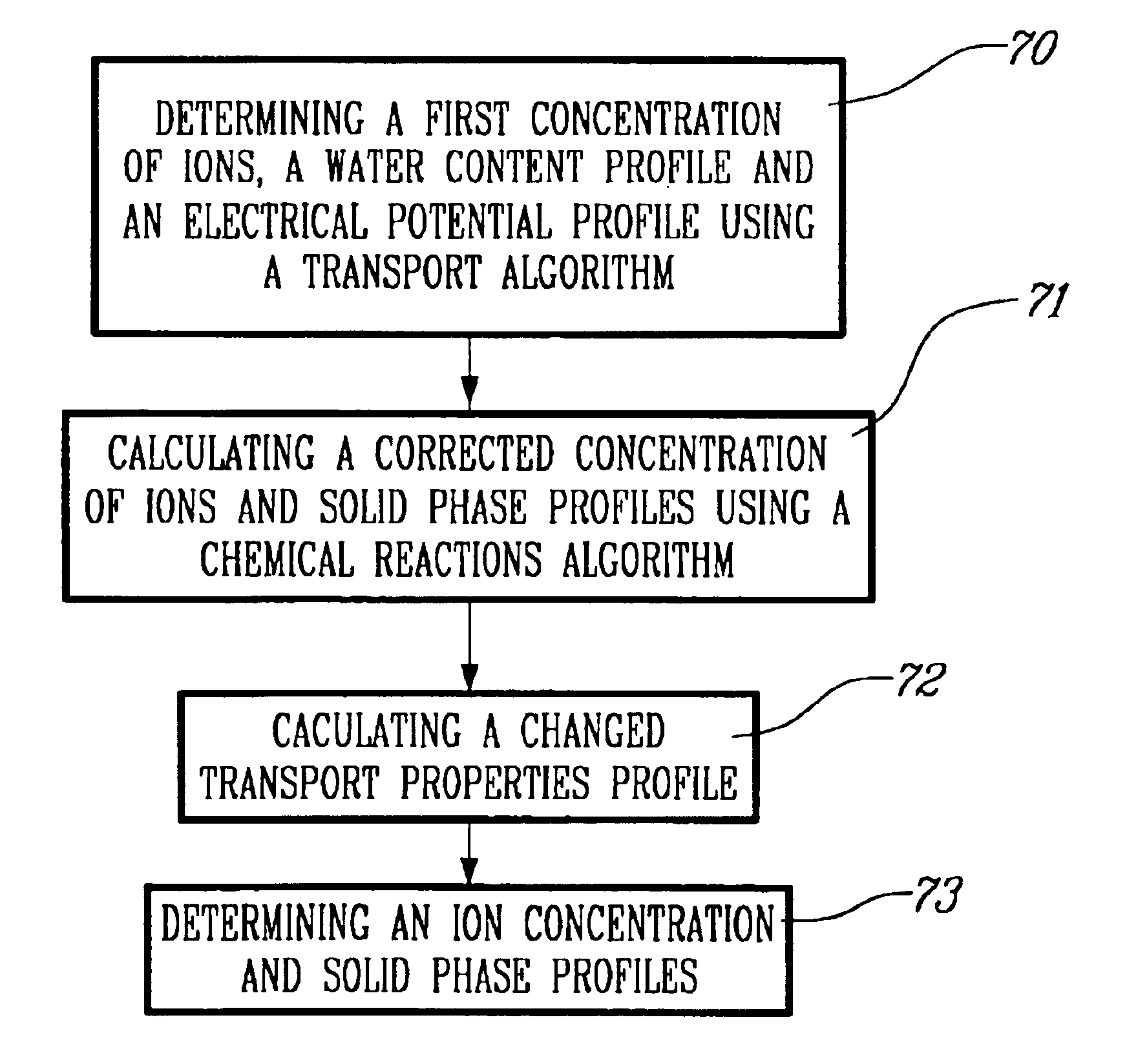Method for modeling the transport of ions in hydrated cement systems
- Summary
- Abstract
- Description
- Claims
- Application Information
AI Technical Summary
Benefits of technology
Problems solved by technology
Method used
Image
Examples
first example
Description of the Problem
[0112]The first example concerns the prediction of the behavior of a concrete slab undergoing external sulfate attack. This type of attack is characterized by the penetration of sulfate (SO42−) in the material, which precipitates into ettringite and gypsum. The formation of these two phases leads to microcracking of the cement paste. The invention allows to locate the ettringite and gypsum through time, giving valuable information on the degradation state of a structure. Parallel to this, the leaching of OH− and Ca2+ out of the material leads to the dissolution of portlandite and the decalcification of C—S—H, which weaken the structure. Again, the invention allows to track the dissolution fronts of both of these phases.
[0113]The case considered for the numerical simulations is shown in FIG. 5. It consists of a 15 cm thick concrete slab S1 lying on a soil S2 bearing a high concentration of sodium sulfate. The concrete S1 has a water / cement ratio of 0.50 and ...
second example
Description of the Problem
[0133]The model can be used to predict the degradation of various cement-based materials (pastes, mortars, concretes) exposed to aggressive chemical solutions. It is used herein to analyze the behavior of cement paste disks made of an ordinary Portland cement prepared at a water / cement ratio of 0.60. The paste was cured for a year in aluminum foil. It was then cut in 12 mm disks. As shown in FIG. 13 these samples 57 were immersed for three months in a sodium sulfate solution 55 prepared at a concentration of 50 mmol / L. All sides of the sample except one were coated with silicon 58. The material being exposed to the aggressive solution on only one face ensures a one-dimensional process. In order to maintain constant the boundary conditions during the test, the test solution was regularly renewed. The microstructural alterations were investigated by means of electron microprobe analyses and scanning electron microscopy.
[0134]The various characteristics of the...
PUM
| Property | Measurement | Unit |
|---|---|---|
| Temperature | aaaaa | aaaaa |
| Length | aaaaa | aaaaa |
| Mass | aaaaa | aaaaa |
Abstract
Description
Claims
Application Information
 Login to View More
Login to View More - R&D
- Intellectual Property
- Life Sciences
- Materials
- Tech Scout
- Unparalleled Data Quality
- Higher Quality Content
- 60% Fewer Hallucinations
Browse by: Latest US Patents, China's latest patents, Technical Efficacy Thesaurus, Application Domain, Technology Topic, Popular Technical Reports.
© 2025 PatSnap. All rights reserved.Legal|Privacy policy|Modern Slavery Act Transparency Statement|Sitemap|About US| Contact US: help@patsnap.com



